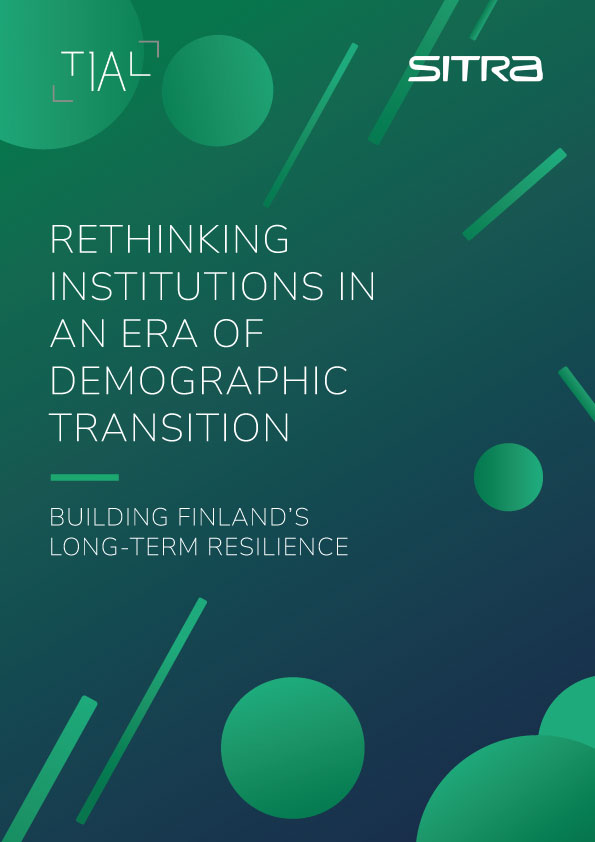Sitra, the Finnish Innovation Fund, and TIAL have partnered to explore how institutional innovation can help Finland navigate the challenges of demographic transition.
Why focus on demographic shifts for institutional innovation?
Finland is undergoing a profound demographic transition. Rising life expectancy, low fertility rates, and continued internal migration are reshaping the foundations of its welfare model, economic productivity, and regional balance. These trends also intersect with one another, reinforcing the need for systemic, coordinated responses. In this context, the country’s existing institutional architecture, designed in the post-war period, has become misaligned with the evolving needs.
As demographic pressures intensify, achieving societal goals, such as quality care for all, meaningful employment, and inclusive economic growth, will become increasingly difficult. Thus, Finland needs to rethink its institutional arrangements; not doing so would force Finland into a vicious cycle of reactive, short-term measures and block coordinated efforts for a more anticipatory, integrated approach.
Additionally, demographic change should not be seen solely as a burden to manage. If addressed proactively, it can become a powerful lever for societal transformation. Countries like Sweden, Singapore, and New Zealand show valuable lessons in how demographic transition can be leveraged as a strategic opportunity to build equitable, responsive, and future-proof public institutions.

Possible entry points
This report outlines approaches for rethinking institutions along five strategic priorities. These areas represent critical leverage points where new institutional designs can support demographic resilience, improve equity, and unlock societal potential.
- Governance of transversal issues: Establish institutions that can synthesise demographic trends across sectors, facilitate coordinated action, and harness collective intelligence.
- Organisation of care: Innovate care models by focusing on integrated, person-centred, community-based systems.
- Developing the silver economy: Develop institutional frameworks that coordinate efforts across government, industry, and communities to support innovation and growth in age-related sectors.
- Workforce adaptation: Support inclusive workplace practices through strategic platforms for age-diverse workforce planning and lifelong learning.
- Governance for future generations: Institutionalise long-term responsibility, integrating intergenerational fairness into governance structures.
Our purpose right now
These proposals are intended to spark reflection, imagination, and collective action toward institutional innovation. Finland is well-positioned to lead this effort with a strong governance tradition, high levels of public trust and a well-established foresight culture. The challenge, as well as opportunity, is to harness these strengths into designing and redesigning institutions that are fit for today’s complexities while being resilient and adaptive enough to meet the evolving needs.
For more information, please email Arvind Kumar, arvind [at] tial [dot] org.


